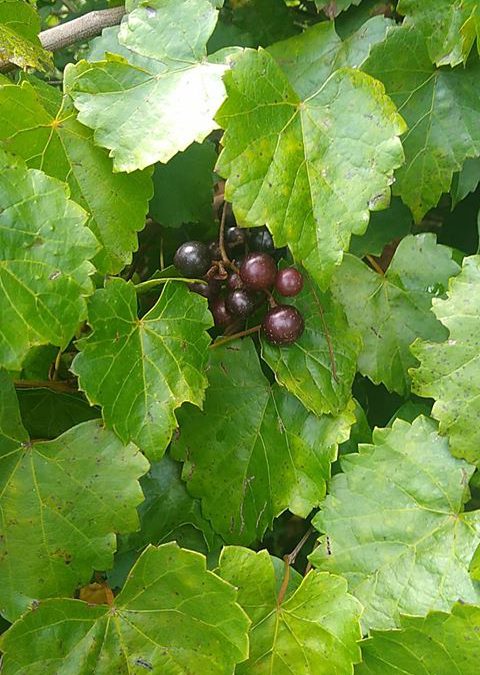
by Carrie Stevenson | Aug 14, 2020
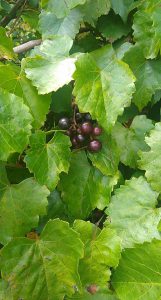
Tasty, edible muscadine grapes are ripening in northwest Florida now. Photo credit: Jennifer Shiver
There is something deeply satisfying about plucking fruit off a plant growing outside and tasting it right off the vine/bush/tree. Since childhood, I have reached carefully through the tiny and numerous thorns of blackberry bushes growing in the woods, hoping the berry I’d worked for was more sweet than tart. One vine-ripe fruit that never disappoints, however, is the native muscadine grape (Vitis rotundifolia). Granted, before eating for the first time you have to be aware that the thick skin will give way to a gelatinous goo with several seeds, but their refreshing taste on a hot summer day is unlike any other. Beloved by deer and other mammals and birds of all types, it’s hard to find a lot of muscadine grapes available in the woods because the wildlife has likely beaten you to them. You can find their unique leaves year-round, though, so at least you know where to look once the grapes start to form. I would be remiss if I didn’t mention these grapes also go by the term “scuppernong”, which is a colloquial term for the lighter green/bronze (and more common) muscadines in the southeast.
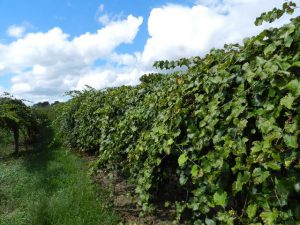
Muscadines are grown commercially for the wine industry throughout Florida.
While tasty on their own, muscadines are most prized for making jelly and wine. We used to have an older Southern Baptist deacon and neighbor who would slip us both, with a wink and an implied promise not to tell the preacher about the wine. Winemaking in Florida is an old tradition, and several local wineries specialize in these sweeter wines, like Chatauqua in DeFuniak Springs. They are often blended with other fruits like blueberry and strawberry. Our Extension colleagues with the Florida Agricultural and Mechanical University (FAMU) have a widely recognized viticulture program, and I recommend their resources if you are interested in growing muscadines yourself.
As for wild muscadines, you can find the vines all over the place, from shady forests to sunny beach dunes. The vines can be up to 100 feet long, climbing with the help of small tendrils. Inconspicuous greenish white flowers form in late spring, with fruit ripening in late summer/early fall. It serves you well to learn field identification for the muscadine, as it is a sweet treat on a hot Florida day.
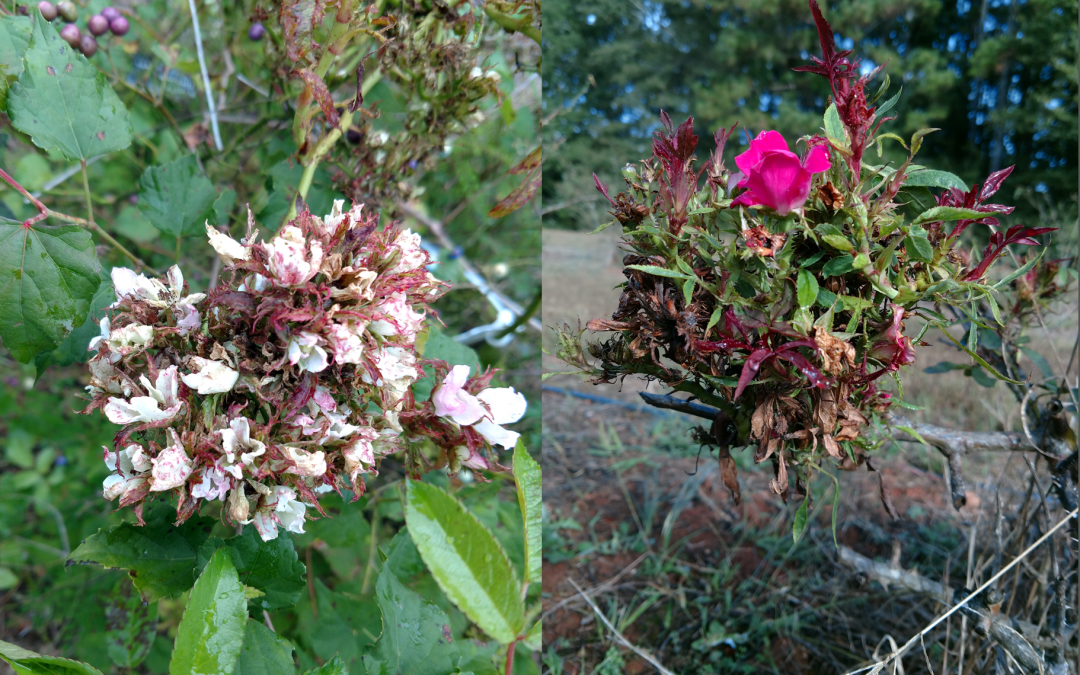
by Carrie Stevenson | Aug 14, 2020
Austin N. Fife, PhD student, Entomology
University of Florida IFAS
North Florida Research and Extension Center
Phyllocoptes fructiphilus: a new threat for Florida roses
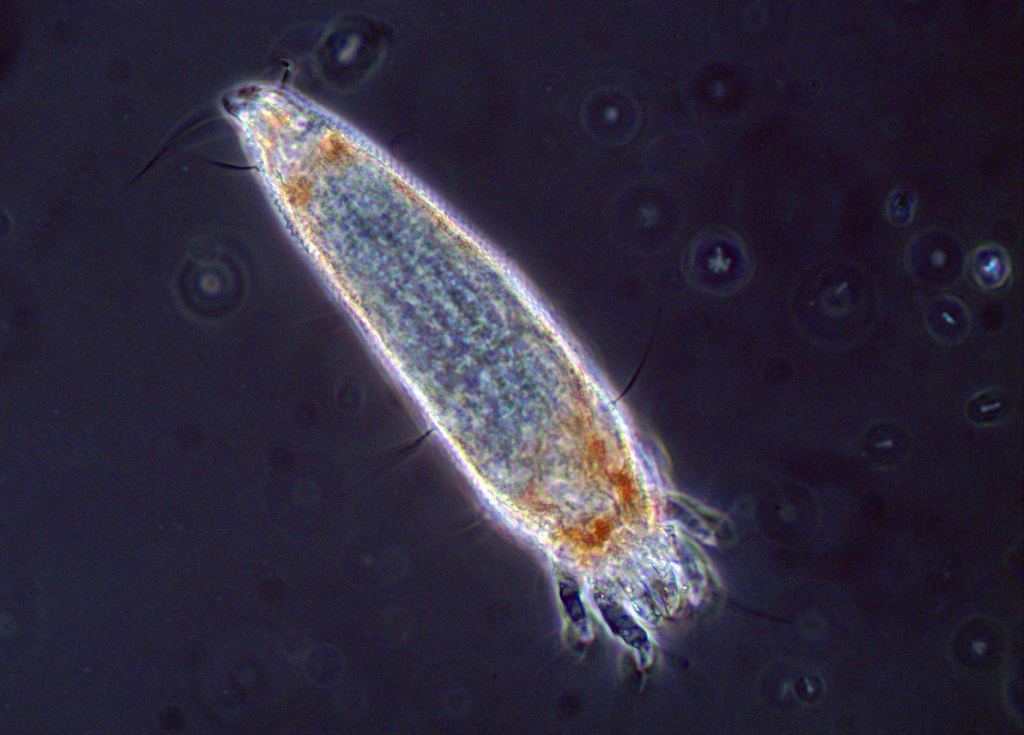
Figure 1: Phyllocoptes fructiphilus . Image Credit Austin N. Fife, UF / IFAS
Phyllocoptes fructiphilus Kefier is a microscopic plant-feeding arachnid belonging to a group of spindle-shaped mites known as Eriophyoid mites. Eriophyoid mites are second only to spider mites in their economic importance and potential for plant damage: some species create galls, others deform plants with their feeding activity, and a few species are capable of spreading viruses. Fortunately, eriophyoid mites very host specific and P. fructiphilus only feeds on plants in the genus Rosa, which includes all of the true roses which we are familiar with.
P. fructiphilus does not cause damage by its feeding alone, but is a pest due to its relationship as the vector of an emaravirus: Rose rosette virus (RRV). RRV infection creates Rose Rosette Disease (RRD), with the following symptoms: witches’ brooms/rosetting, deformed flowers, increased prickle density, elongated shoots, reddened leaves and stems, and increased die-back which ultimately kills the rose host. RRD is the most serious disease of roses, creating millions of dollars of losses for growers. Rose Rosette Disease and the mite have invaded the southeastern United States as the non-native Rosa multiflora (Thunb) has spread invasively towards the eastern coast and by the introduction of infected roses from out of state into Florida.
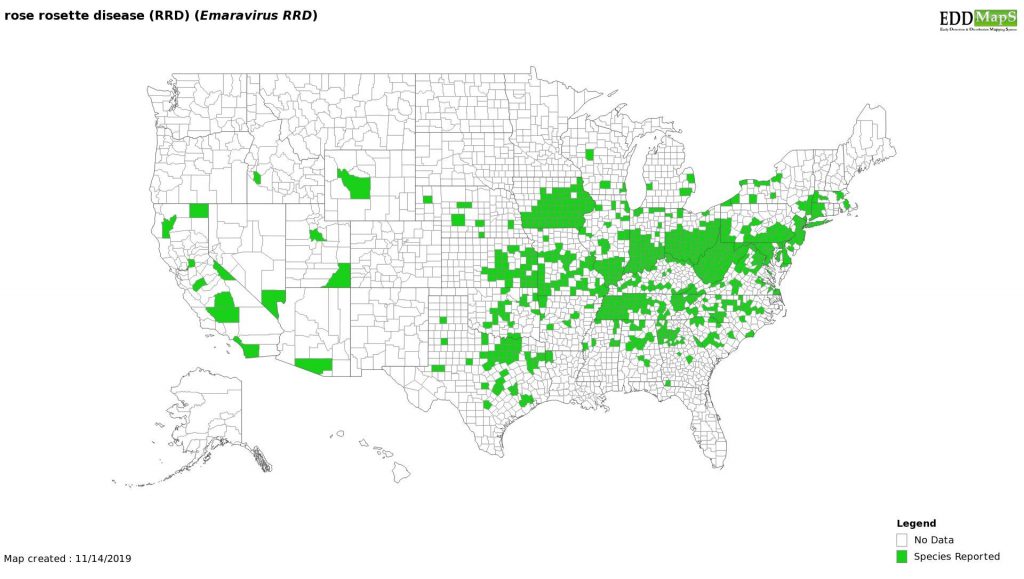
Figure 2: EDDMapS. 2020. Early Detection & Distribution Mapping System. The University of Georgia – Center for Invasive Species and Ecosystem Health. Available online at http://www.eddmaps.org/
RRD was initially detected in Florida in 2014 on 15 plants; however, the plants were destroyed and P. fructiphilus were not detected on the roses after that time.
In early 2019, a survey of predatory mites on roses found eriphyoid mites in samples obtained while surveying roses in Leon County, Florida. The mites were sent to the Florida Department of Agriculture and Consumer Services – Department of Plant Industry (FDACS-DPI) and were all identified as P. fructiphilus by Dr. Sam Bolton. To date, none of these roses have shown signs or symptoms of RDD and none of these plants have tested positive for presence of the virus.
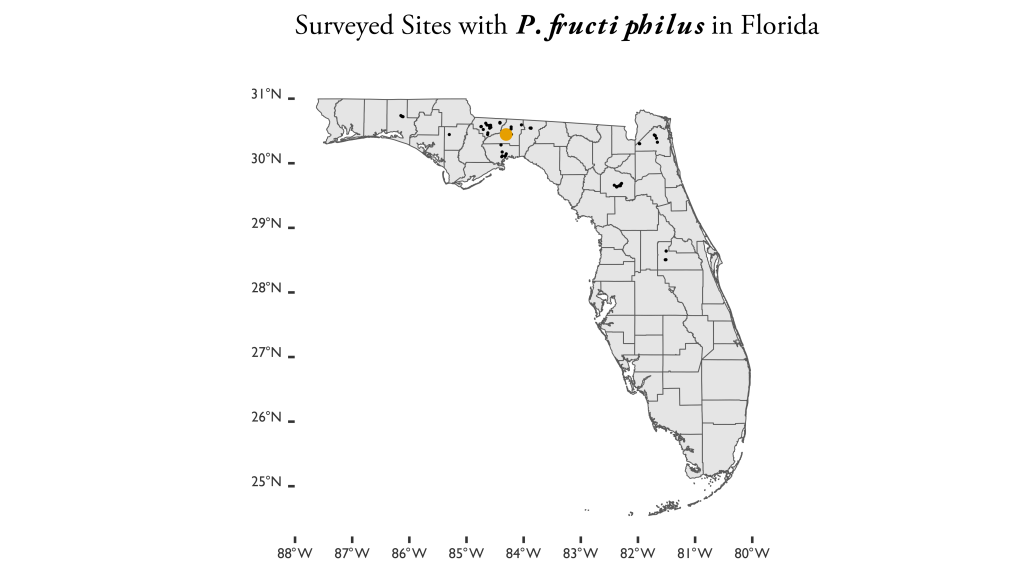
Figure 3: Black dots indicate individual sites which have been surveyed for Phyllocoptes fructiphilus. Orange dots indicate a number of sites with populations of P. fructiphilus detected in Leon county, Florida. No symptoms of Rose Rosette Disease have been seen on these plants to date. Image Credit Austin N. Fife, UF / IFAS
This is the first recorded instance of P. fructiphilus in Florida and is worrisome despite the absence of the virus. Fortunately, RRV is currently not established in Florida. However, the presence of P. fructiphilus, along with past detections of RRV in Florida warrants an increase in monitoring efforts for the mite and virus in Florida.
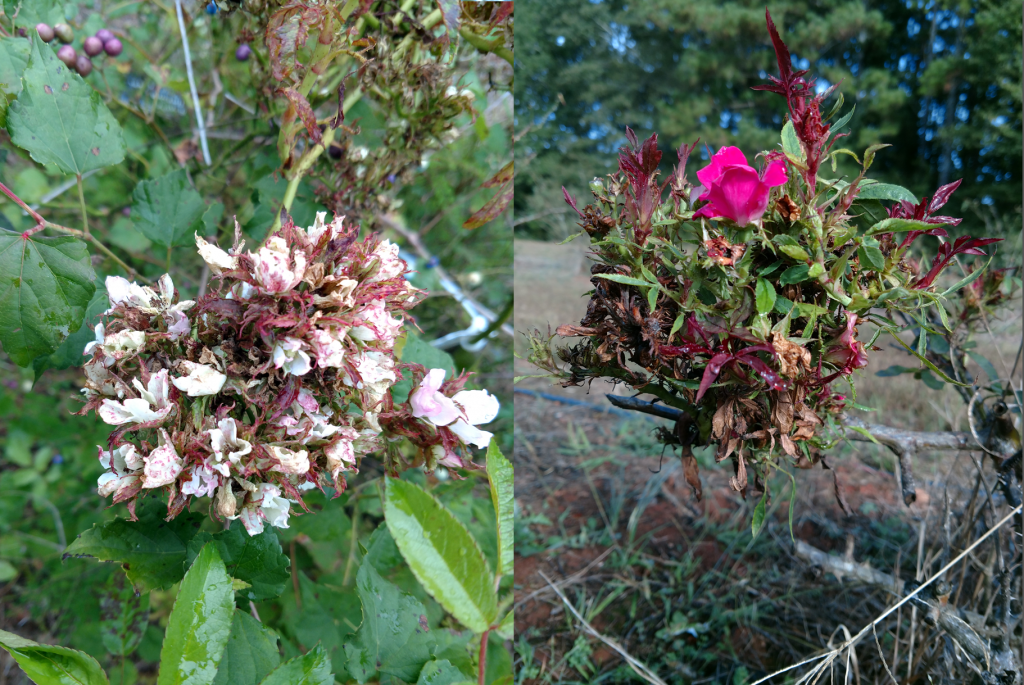
Figure 4: Typical symptoms of Rose Rosette Disease. Image Credit Austin N. Fife, UF / IFAS
How can I identify roses that have Rose Rosette Disease?
It is difficult to identify the symptoms of RRD in the field for a few reasons. Primarily, there are different growth habits for different rose cultivars. What appears to be ‘excessive thorniness’ in one cultivar may be normal for another, and is can be easy to mistake the redness of new flush with symptoms of the RRD. In addition, glyphosate damage from improper use of Roundup or similar products can have a very similar appearance to diseased roses. The best way to verify RRD infection is to use molecular testing for the virus. Identifying the presences of eriophyoid mites is useful for diagnosis, but they are too small to see with pocket loupes and are difficult to find unless there are large numbers of mites. To properly identify an eriophyoid mite as P. fructiphilus requires the use of a compound microscope with a specially prepared microscope slide of the mite, as well as reference materials and a trained individual who knows what characters to look for.
What to do if I suspect that my roses are infected with Rose Rosette Disease?
We recommend reporting suspected cases of RRD to your local extension agency or the Florida Department of Agriculture.
Where should I send my samples?
Plant Disease Diagnostic Clinic at the North Florida Research and Education Center in Quincy: https://nfrec.ifas.ufl.edu/plant-pathology-clinic/
Mathews Paret, Director, Plant Disease Diagnostic Clinic – UF NFREC (850) 875-7154, paret@ufl.edu
UF/IFAS Disease Diagnostic Center in Gainesville:
- 392-1795, pdc@ifas.ufl.edu
2570 Hull Rd Gainesville, FL 32603
Florida Department of Agriculture and Consumer Services – Division of Plant Industry
1-888-397-1517 Helpline (352) 395-4600 (Helpline Number, Outside of the United States) DPIHelpline@FDACS.gov
The Doyle Conner Building 1911 SW 34th St. Gainesville, FL 32608
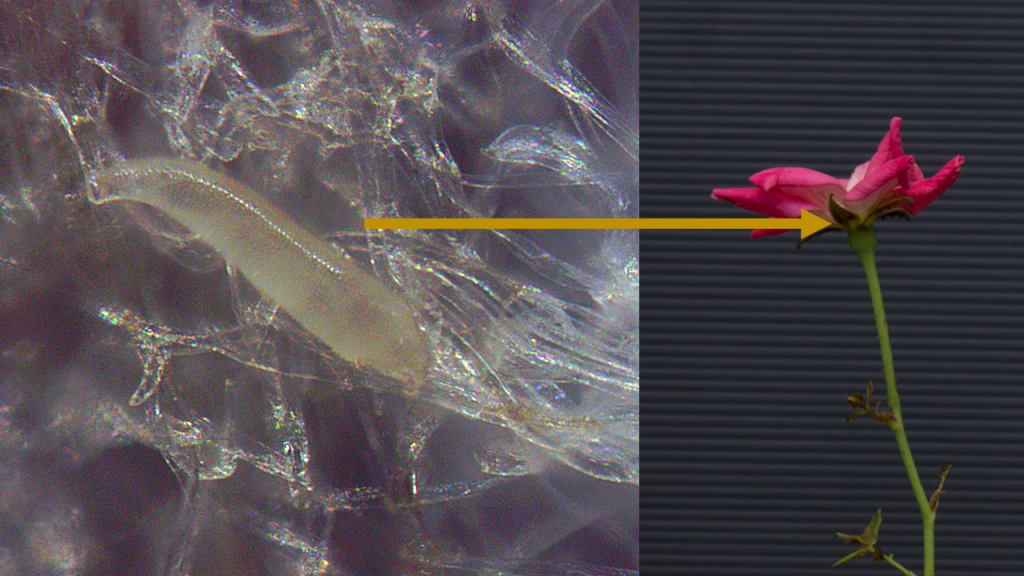
Figure 5: Phyllocoptes fructiphilus is a refuge-seeking mite ,which hides under rose sepals, which are covered in tiny glandular plant hairs known as trichomes that protect the mites. Image Credit: Austin N. Fife, UF / IFAS
How Can I Manage Rose Rosette Disease?
Currently, there are no commercially available rose cultivars known to resist Rose Rosette Disease or Phyllocoptes fructiphilus. A major difficulty lies in the cryptic nature of these mites, which hide underneath the rose sepals. It is important to consider this when considering which control methods to use. Methods which require direct contact with the mites to kill them are unlikely to work.
This makes it difficult for chemical applications which require contact with the pest to work.
Keeping that in mind, there are a few things you can do to reduce your risk of RRD and prevent the spread of the mite:
- Eliminate infected wild roses nearby
- Heavy pruning followed by horticultural oil spray may reduce populations of the mite, but cannot prevent a viral infection from spreading.
- Space plants so their leaves and roots don’t touch
- Dispose of diseased roses properly: bag up infected materials and dispose of in areas away from other roses
- After removing infected plants, spray remaining plants with miticides recommended at https://roserosette.org/control/
- Spray uninfected plants adjacent to removed (infected) plants

by Carrie Stevenson | Jul 1, 2020
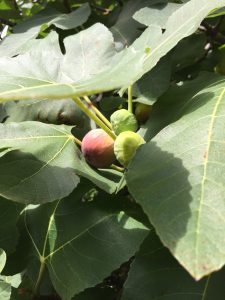
Ripe figs are a deep shade of pink to purple. Larger green figs will ripen in a few days. Photo credit: Carrie Stevenson
Summer is full of simple pleasures—afternoon rainstorms, living in flip flops, and cooling off in a backyard pool. Among these, one of my favorites is walking out my door and picking handfuls of figs right from the tree. Before we planted our tree, my only prior experience with the fruit was a Fig Newton—I’d never eaten an actual fig, much less one picked fresh. Now, they are my favorite fruit.
Native to Asia Minor and the Mediterranean, figs were introduced to Florida in the 1500’s by Spanish explorers. Spanish missionaries introduced these relatives of the mulberry to California a couple hundred years later. Figs are best suited to dry, Mediterranean-type climates, but do quite well in the southeast. Due to our humidity, southern-growing figs are typically fleshier and can split when heavy rains come through. The biggest threats to the health of the trees are insects, disease (also due to our more humid climate) and root-knot nematodes.

Fig trees can grow quite large and produce hundreds of fruit each year. Photo credit: Carrie Stevenson
Our tree started out just a couple of feet tall, but 15 years ago we replanted it along a fence in our back yard. It grew so large (easily 25 feet tall and equally wide) that it hangs over our driveway, making it handy to grab a few as I head out for a walk or hop in the car to run errands. The tree is in full sun at the bottom of a slope, and seems to be a satisfied recipient of all the runoff from our backyard. This position has resulted in a thick layer of soil and mulch in which it thrives. In the last year, we pruned it down to an arms-reach height so that we could actually get to the figs being produced.
We usually see small green fruit start to appear in early May, becoming fat and ripe by the second half of June. The tree produces steadily through early August, when the leaves turn crispy from the summer heat and there’s no more fruit to bear. The common fig doesn’t require a pollinator, so only one tree is necessary for production. The fiber-rich fig is also full of calcium, potassium, and vitamins A, E, and K. As it turns out, the “fruit” is actually a hollow peduncle (stem) that grows fleshy, forming a structure called a synconium. The synconium is full of unfertilized ovaries, making a fig a container that holds both tiny flowers and fruit in one.
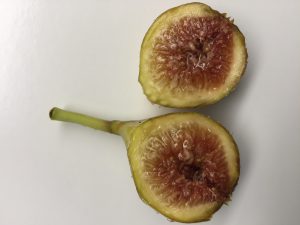
The insides of a fig show the small flowering structures that form the larger fruit. Photo credit: Carrie Stevenson
With the hundreds of figs we’ve picked, my family has made fig preserves, fig ice cream, baked figs and of course eaten them raw. We typically beg friends and neighbors to come help themselves—and bring a ladder—because we can’t keep up with the productivity. The local birds and squirrels are big fans, too. Often you can tell you’re near our tree from around the block, as the aroma of fermenting fruit baking on the driveway is far-reaching.
No matter what you do with them, I encourage planting these trees in your own yard to take full advantage of their sweet, healthy fruit and sprawling shade. As Bill Finch of the Mobile (AL) botanical gardens has written, “fresh…figs are fully enjoyed only by the family that grows them, and the very best figs are inevitably consumed by the person who picks them.”
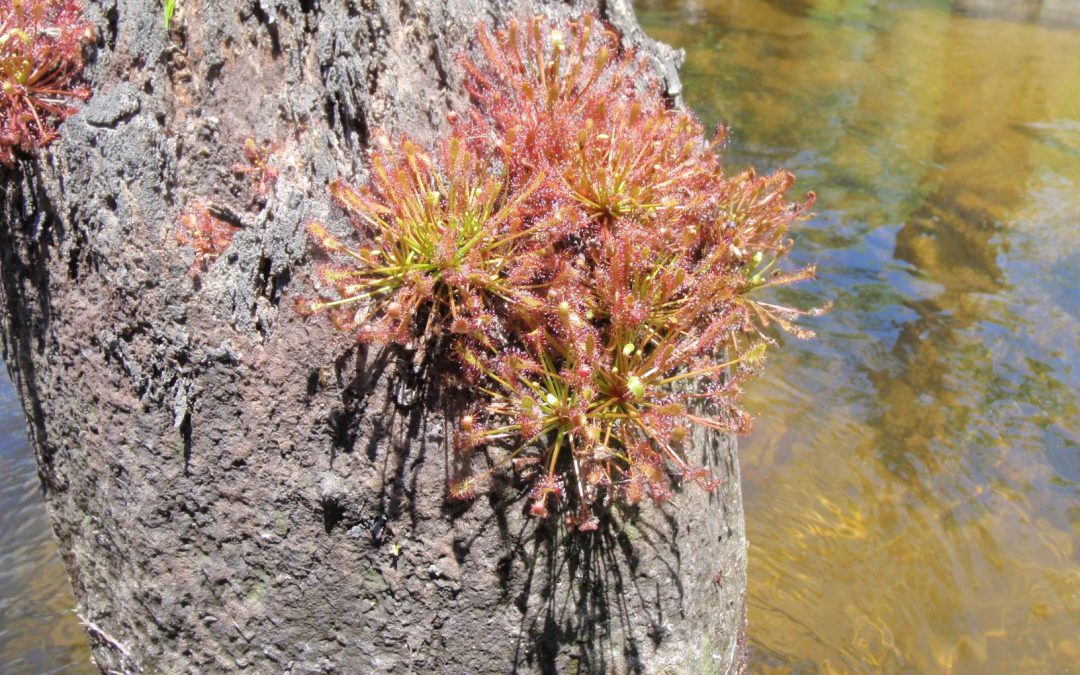
by Carrie Stevenson | Jun 4, 2020
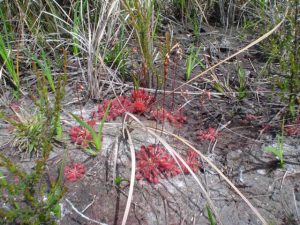
Sundews, tiny carnivorous plants found in pitcher plant bogs, use an enzyme dissolve insect proteins. Native Americans recognized this property and used the plant for skin maladies. Photo credit: Carrie Stevenson, UF IFAS Extension
There are few words better than “pure delight” to describe the face of someone who sees and appreciates a sundew for the first time. Maybe it is their size—often no bigger around than a quarter—or the miniature pinwheel shape, but sundews could easily fit into a fable about garden gnomes or fairies in the woods. These tiny plants hide in plant sight–so small and flush to the ground that you likely won’t see them unless specifically looking for them. But, once you are looking in the right conditions, you will probably see them everywhere.
Sundews (Drosera spp.) are small carnivorous plants found in the same bogs as pitcher plants. They thrive in moist, mucky soil and full sun. They are also carnivorous for the same reasons pitcher plants are—their wet, acidic habitats possess few soil nutrients, so they use insects instead.
Sundews utilize a different method for trapping insects—their flat, radiating structure has wider lobes on the ends, which are covered with hairlike tentacles. These hairs secrete droplets of sticky sap visible at the tip of each hair. Small insects are attracted to the dewlike sap and get stuck. The hairs curl around the insect like a slow Venus flytrap, and natural enzymes to break down the bug.
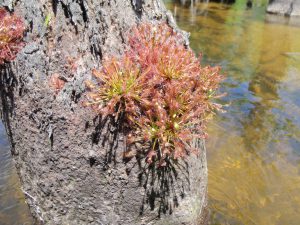
A healthy sundew plant growing just above the water level at Boiling Creek in Santa Rosa County. Photo credit: Larry Burner, Florida Master Naturalist
There are almost 200 species of sundews, not all with the flat growth pattern. The threadleaf sundew has an upright structure, while others may grow in a spherical shape at the water’s edge. While paddling Boiling Creek on Eglin Air Force Base property a few years ago, our group saw dozens of sundews growing on the trunks of cypress and tupelo trees at eye-level from our kayaks. They were about 4-6” in diameter, much larger than the 1” ones we typically see in the bogs.
Tarkiln State Park, Weeks Bay National Estuarine Research Reserve, or any place you find pitcher plants are a great place to find sundews. You may have to get on your knees to see them, and move the grasses aside. Bring a hand lens to magnify the delicate details of the droplets of sap perched at the tip of tiny hairs.
Even the famous naturalist Charles Darwin was enthralled with sundews, conducting experiments and writing volumes about them. In an 1860 letter to his geologist friend Charles Lyell, Darwin stated that, “at the present moment, I care more about Drosera than the origin of all the species in the world.” If you, too, are fascinated with carnivorous plants, check out these resources from UF IFAS Extension and the Botanical Society of America.
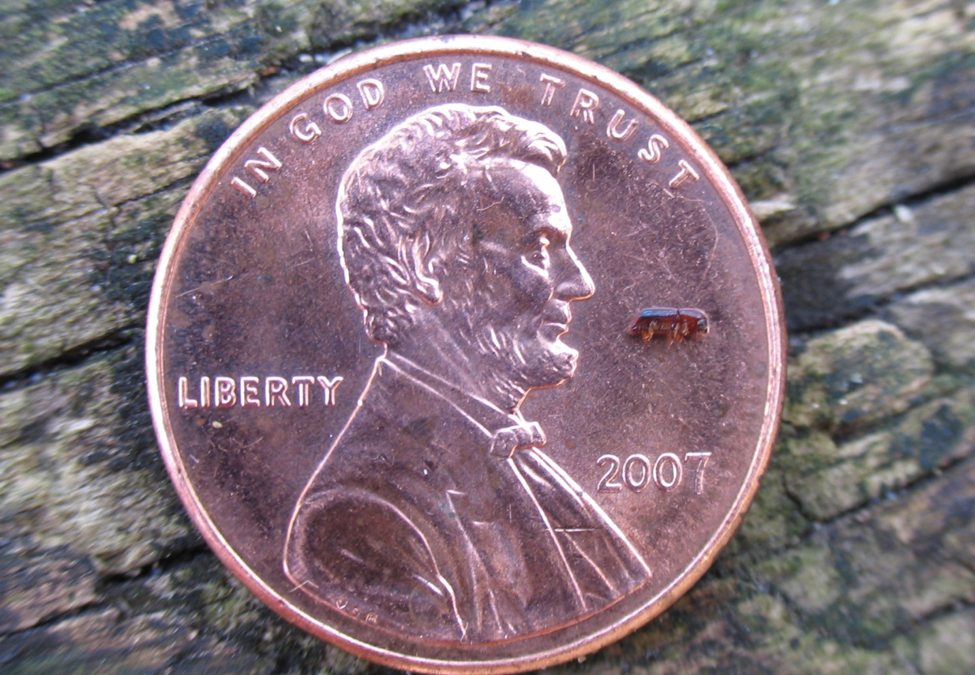
by Carrie Stevenson | Jun 4, 2020
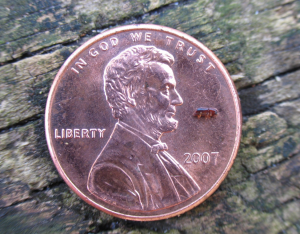
Fig. 1 An adult redbay ambrosia beetle compared to the size of a single penny. Credit: UF/IFAS File Photo.
While most bark beetles are important in forest ecology by recycling fallen dead trees and eliminating sick and damaged trees, some of them may impact healthy trees. A group of bark beetles that has become a major concern to forest managers, nurseries, and homeowners is the ambrosia beetle. Ambrosia beetles are extremely small, 1-2 mm in length, and live and reproduce inside the wood of various species of trees (Fig. 1). Ambrosia beetles differ from other bark beetles in that they do not feed directly on wood, but on a symbiotic fungus that digests wood tissue for them. Every year, non-native species of ambrosia beetles enter the United States through international cargo and we have now nearly forty non-native species of ambrosia beetles confirmed in the United States. Among them, the redbay ambrosia beetle (Xyleborus glabratus), originally from Southeast Asia, is the vector of the fungal pathogen causing laurel wilt, a disease that devastated the Lauracaea population in the southeastern USA, killing millions of redbay, swamp bay, sassafaras and silk bay.
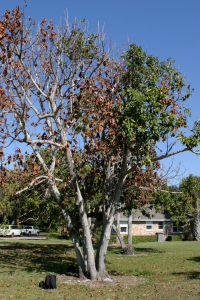
Fig. 2: A mature dooryard avocado tree with large sections of dead and missing leaves, caused by laurel wilt disease. Summer 2009 Impact Magazine image. Credit: UF/IFAS File Photo.
When these beetles attack a laurel tree, the symbiotic fungus is vectored to the tree’s sapwood after the beetle has tunneled deep into the tree’s xylem, actively colonizing the tree’s vascular system. This colonization leads to an occlusion of the xylem, causing wilting of individual branches and in a matter of weeks progresses throughout the entire canopy, eventually leading to tree death (Fig. 2). The laurel wilt disease has spread rapidly after the vector was first detected in Georgia in 2002. The redbay ambrosia beetle was first detected in Florida in 2004, in Duval County, attacking redbay and swamp bay trees. At this point, it is estimated that more than one-third of redbay in the U.S.A., 300 million trees, have succumbed to the disease.
Starting in 2017, we examined the efficacy of verbenone against redbay ambrosia beetle in live laurel trees in a natural forest setting. Verbenone is an anti-aggregation pheromone that has been used since the 1980’s to protect lodgepole pine. Verbenone also has the potential to be used over large areas and is currently being used to protect ponderosa pine plantations from the Mountain Pine Beetle in the western US.
We have found verbenone to be an environmentally friendly and safe tool to prophylactically protect laurel trees against redbay ambrosia beetle. Our protocol consists of the application of four 17 g dollops of a slow-release wax based repellent (SPLAT Verb®, ISCA technology of Riverside, CA) to the trunk of redbay trees at 1 – 1.5 m above ground level (Fig. 3). The wax needs to be reapplied every 4 months during fall and winter and every 3 months during spring and fall when temperature is higher. When compared to the control trees without repellents, we found that trunk applications of verbenone reduced landing of the redbay ambrosia beetle on live redbay trees and increased survivorship of laurel trees compared to untreated trees (Fig. 4). Verbenone should be considered as part of a holistic management system against redbay ambrosia beetle that also includes removal and chipping of contaminated trees.
If you have Redbay or other bay species on your property and are concerned about Laurel Wilt Disease or Redbay Ambrosia Beetle damage, contact your local UF/IFAS Extension Agents for help!
This article is courtesy of Dr. Xavier Martini and Mr. Derek Conover of the UF/IFAS North Florida Research and Education Center (NFREC) in Quincy.

Fig. 3: Application of SPLAT Verb on a redbay tree during a field trial

Figure 4: (A): Cumulative capture of redbay ambrosia beetles Xyleborus glabratus following a single application of verbenone vs untreated control (UC). (B) Survivorship of redbay and swamp bay trees treated with verbenone on four different studies conducted in 2017 and 2018.





















